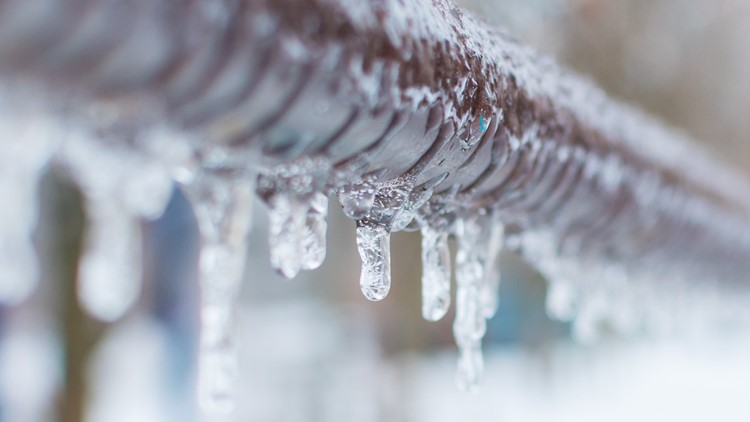On this page further down you can find a bunch of excellent help and advice about Winter Plumbing Precautions: Preventing Frozen Pipes.

Cold weather can wreak havoc on your pipes, specifically by freezing pipelines. Below's exactly how to avoid it from occurring and what to do if it does.
Introduction
As temperatures decline, the risk of icy pipes rises, potentially causing costly repair services and water damages. Understanding just how to prevent frozen pipelines is important for home owners in cold climates.
Avoidance Tips
Shielding vulnerable pipes
Cover pipelines in insulation sleeves or make use of heat tape to safeguard them from freezing temperatures. Concentrate on pipes in unheated or outside areas of the home.
Home heating methods
Maintain indoor rooms effectively heated, specifically areas with pipes. Open cupboard doors to allow warm air to circulate around pipelines under sinks.
Just how to identify icy pipes
Seek decreased water flow from faucets, unusual odors or noises from pipes, and visible frost on exposed pipes.
Long-Term Solutions
Structural modifications
Think about rerouting pipes away from exterior wall surfaces or unheated locations. Add extra insulation to attic rooms, basements, and crawl spaces.
Updating insulation
Buy high-quality insulation for pipelines, attic rooms, and walls. Correct insulation aids preserve consistent temperature levels and minimizes the threat of frozen pipelines.
Securing Outdoor Pipes
Garden hoses and outside faucets
Detach and drain yard hose pipes prior to wintertime. Mount frost-proof faucets or cover exterior faucets with protected caps.
Recognizing Icy Pipes
What creates pipelines to freeze?
Pipes freeze when subjected to temperature levels listed below 32 ° F (0 ° C) for extended periods. As water inside the pipes freezes, it broadens, taxing the pipeline wall surfaces and possibly creating them to burst.
Risks and damages
Frozen pipelines can lead to supply of water interruptions, property damage, and expensive repair services. Burst pipelines can flooding homes and create extensive architectural damage.
Indicators of Frozen Pipes
Identifying frozen pipelines early can avoid them from rupturing.
What to Do If Your Pipelines Freeze
Immediate actions to take
If you believe icy pipes, keep taps available to ease stress as the ice melts. Make use of a hairdryer or towels soaked in hot water to thaw pipelines slowly.
Final thought
Stopping frozen pipelines needs aggressive steps and quick actions. By understanding the reasons, indicators, and safety nets, property owners can secure their pipes throughout winter.
5 Ways to Prevent Frozen Pipes
Drain Outdoor Faucets and Disconnect Hoses
First, close the shut-off valve that controls the flow of water in the pipe to your outdoor faucet. Then, head outside to disconnect and drain your hose and open the outdoor faucet to allow the water to completely drain out of the line. Turn off the faucet when done. Finally, head back to the shut-off valve and drain the remaining water inside the pipe into a bucket or container. Additionally, if you have a home irrigation system, you should consider hiring an expert to clear the system of water each year.
Insulate Pipes
One of the best and most cost-effective methods for preventing frozen water pipes is to wrap your pipes with insulation. This is especially important for areas in your home that aren’t exposed to heat, such as an attic. We suggest using foam sleeves, which can typically be found at your local hardware store.
Keep Heat Running at 65
Your pipes are located inside your walls, and the temperature there is much colder than the rest of the house. To prevent your pipes from freezing, The Insurance Information Institute suggests that you keep your home heated to at least 65 degrees, even when traveling. You may want to invest in smart devices that can keep an eye on the temperature in your home while you’re away.
Leave Water Dripping
Moving water — even a small trickle — can prevent ice from forming inside your pipes. When freezing temps are imminent, start a drip of water from all faucets that serve exposed pipes. Leaving a few faucets running will also help relieve pressure inside the pipes and help prevent a rupture if the water inside freezes.
Open Cupboard Doors
Warm your kitchen and bathroom pipes by opening cupboards and vanities. You should also leave your interior doors ajar to help warm air circulate evenly throughout your home.

I stumbled upon that blog entry on How to Prevent Your Pipes From Freezing while doing a search on the search engines. So long as you liked our blog post kindly consider to pass it around. Bless you for your time. Kindly come visit our website back soon.
Get A Free Estimate
Comments on “Tips to Avoid Frozen Plumbing in Cold Weather: Professional Tips”